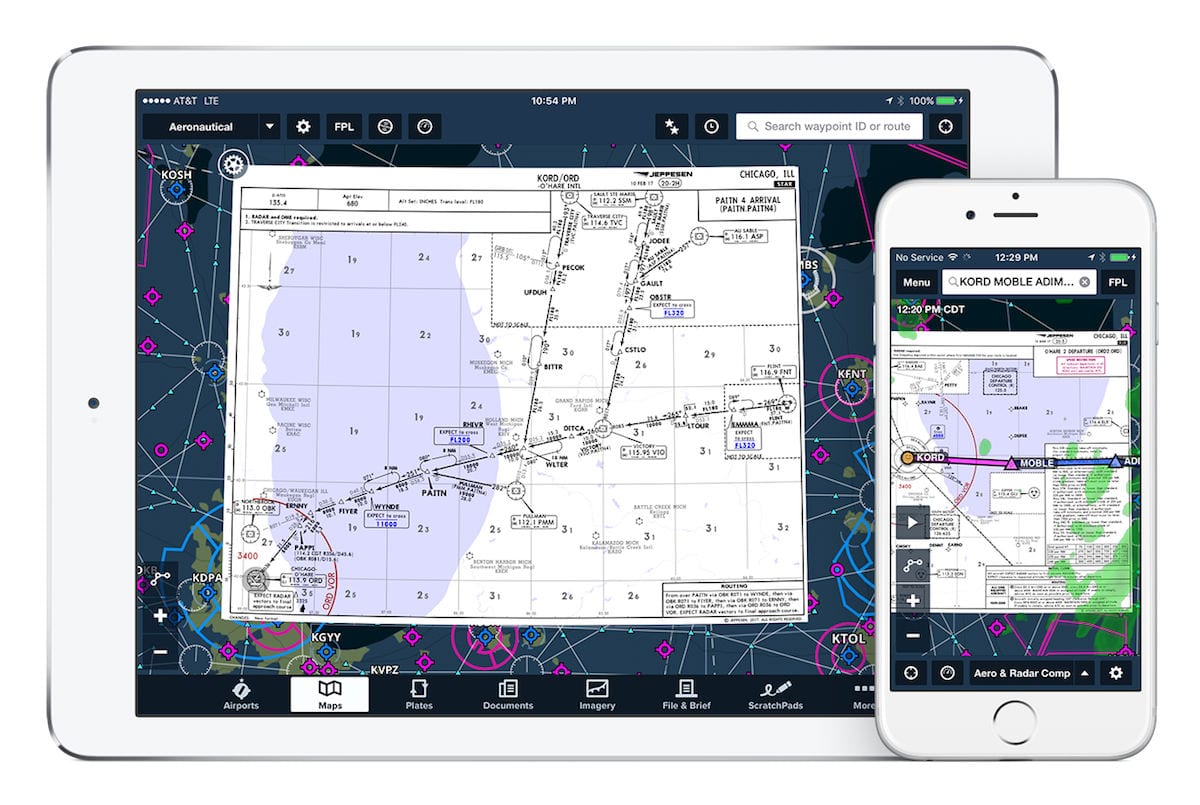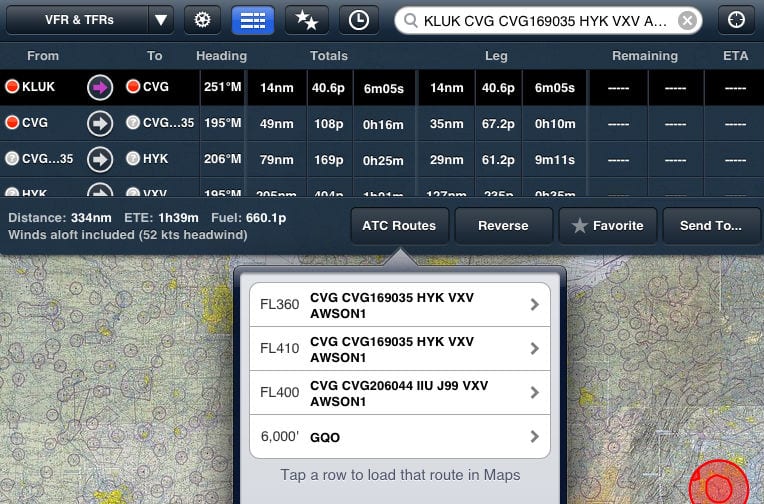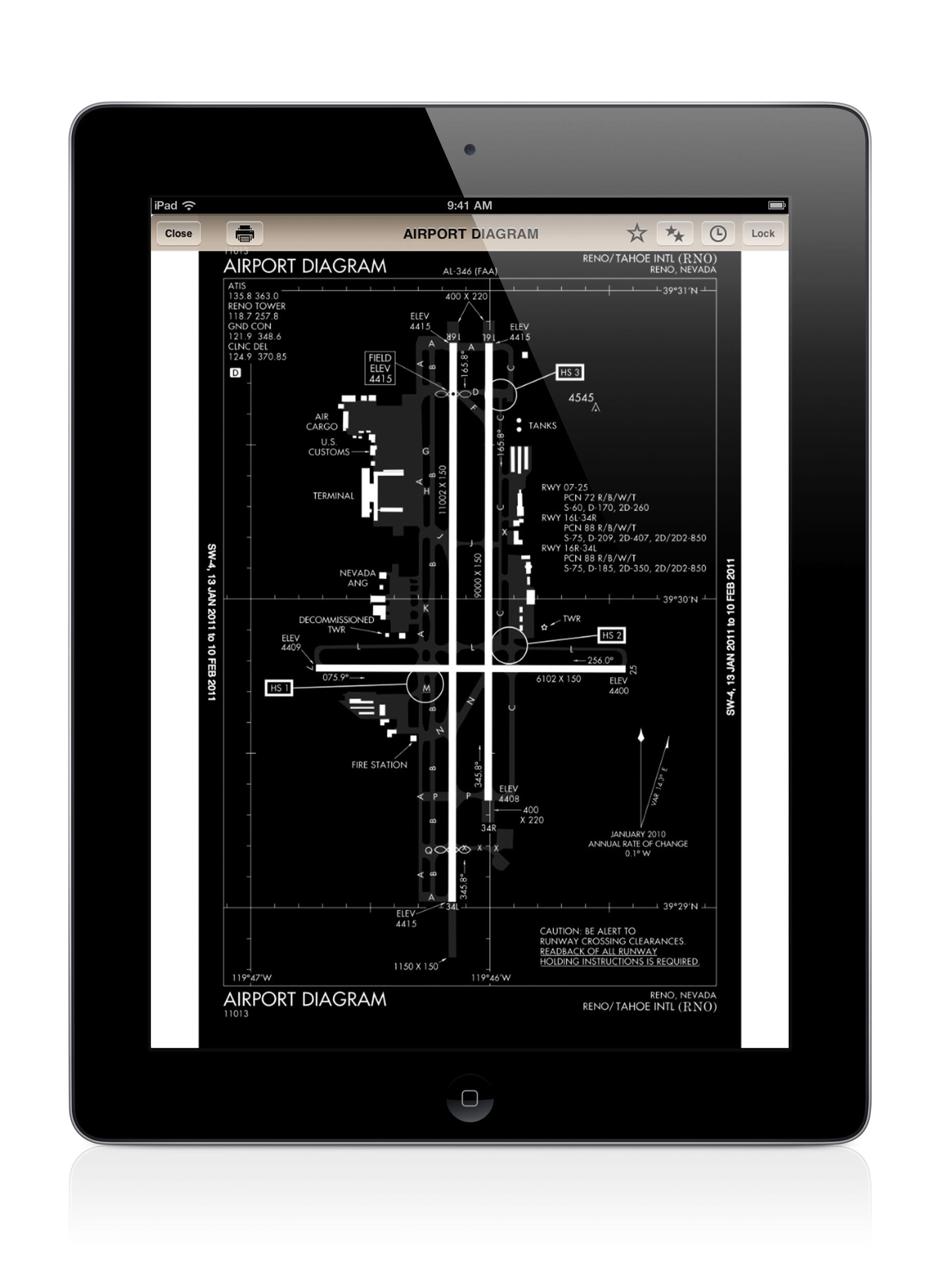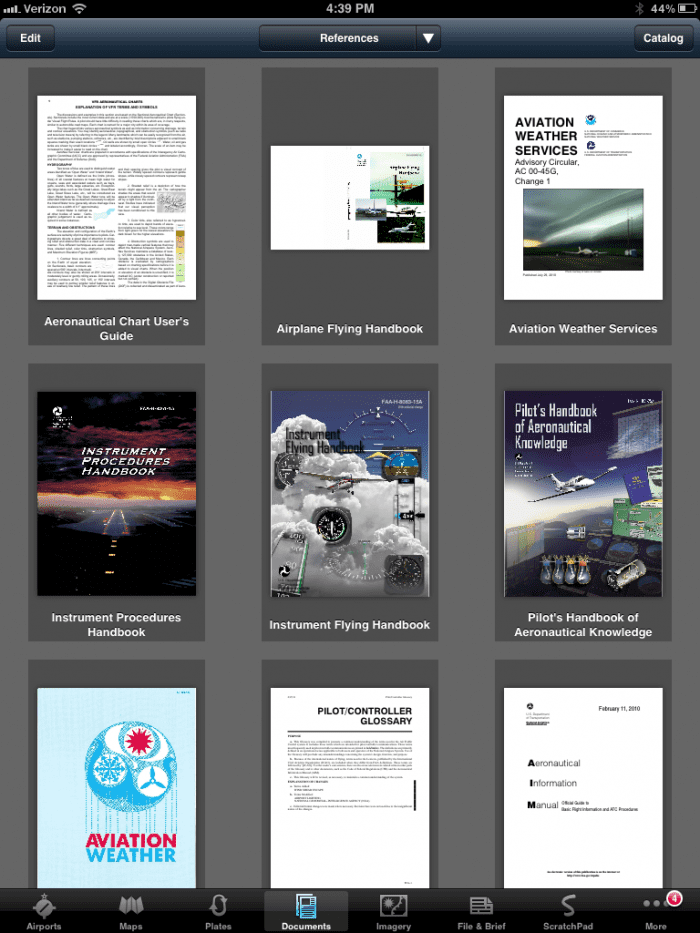ForeFlight celebrates ten years – what comes next?
Ten years may not be long in the aviation business, but it’s an eternity in the world of software and consumer electronics. That contrast explains why ForeFlight is simultaneously viewed as a scrappy, young startup and one of the founding members of the electronic flight bag revolution. The company started in 2007 as a side project for two pilots, Tyson Weihs and Jason Miller, who had never met in person but believed smartphones would change how pilots made decisions. Since then, ForeFlight has grown up alongside the iPhone, the App Store, and the iPad. It now employs more than 120, scattered across offices in Austin, Houston, Maine, and even Europe.
There is one thing most pilots agree on at this point: ForeFlight is a powerful force in general aviation.
We recently visited ForeFlight’s Austin office and sat down with Tim Schuetze, Executive Vice President of Strategy and Business Development. His job is to keep an eye on the long range forecast, and ensure all the various pieces come together in a way that makes ForeFlight’s products more powerful without making them more complicated. In addition to his software background, Schuetze is also an active pilot (like many at ForeFlight), frequently flying a Baron on cross country trips.
We asked Schuetze about the major areas of focus for the company, what comes next, and how they maintain quality as they grow.
Proactive alerts
As EFB apps have added more and more information, from new airport details to enhanced weather products, they have become more valuable but some pilots have struggled to keep up with the sheer quantity of available data. While ForeFlight generally wins points for its ease of use, Schuetze believes there is more to be done in organizing the flood of information and making it useful.
One example of this focus is the graphical briefing, which ForeFlight introduced last year. This tool, accessed via the Flights tab, collects all the familiar preflight weather briefing pieces and organizes it into a logical flow, complete with graphics and noteworthy callouts. It’s a dramatic improvement over the previous option: pages of all caps abbreviations. After a pilot receives such a briefing, the app will continue to monitor weather and airspace conditions and present route-sensitive alerts in the Flights tab, under Messages. The result is less research, less noise, and more actionable information. Preflight weather decision-making is certainly one of the critical jobs for any pilot, so features that make this easier and faster are clearly important priorities.
Another pilot-centric feature is the app’s variety of pop-up alerts, including those for runway length, traffic, and ATIS frequencies. While these are fairly basic at this point, they work well because they use both visual and audio cues to get the pilot’s attention, no matter what screen the app is showing. Pilots don’t have to remember to check the app. It’s easy to imagine more such alerts being added to the app – for example, Garmin Pilot allows pilots to set custom alerts for fuel timers.
The overall goal is to improve the preflight and in-flight workflow, by presenting the right information at the right time. Instead of forcing pilots to go searching for the answer to a question, the app should proactively suggest answers and thus keep the pilot’s eyes outside.
Performance planning
ForeFlight’s new Performance Plus subscription, introduced this summer, might seem like a fairly minor update, but it’s actually a significant new platform for the company. This gives pilots access to highly accurate performance models, including climb, cruise, and descent segments – each one adjusted for weight, altitude, and temperature. It’s a complex and labor-intensive product, but it yields great benefits for pilots in terms of time and fuel burn accuracy.
This has typically been thought of as a feature for turbine airplanes, where a more accurate fuel burn calculation can have a major impact on both cost and safety, but Schuetze believes piston pilots can benefit from this level of precision as well. For a Bonanza taking off from Santa Fe, New Mexico, considering how much fuel to carry and the effects on climb performance is critical information. Professional pilots may be required to do the math every time; private pilots aren’t, but they are much more likely to make the right decision if it’s fast and easy (or even automatic) to do the calculations.
An update just last week shows the continuing effort to make performance calculations as accurate as possible. Historical winds are now included in the Flights tab, so pilots planning a flight four weeks out can get a realistic estimate of the time en route, instead of just seeing a zero wind number. We suspect this isn’t the last enhancement to this feature.
Web
A final focus area may be surprising to some pilots: ForeFlight Web. The online version of the app, launched as a public beta at Sun ‘n Fun 2015, has quietly grown into a powerful planning tool. It now includes interactive maps, complete flight planning, logbook data, and track logs. Most importantly, information from ForeFlight Web automatically syncs to pilots’ mobile devices.
Far from being a sideshow, Schuetze sees this as the fulfillment of the “web to panel” promise of ForeFlight. Pilots can now plan a flight on a large-screen laptop, check their iPhone for a last minute briefing at the airport, then use their iPad to load the active flight plan into the panel-mounted avionics (using Garmin FlightStream, for example). It’s a major accomplishment for a company that once aimed to make a simple iPhone app.
Clearly, ForeFlight is still a mobile-first company, and that continues to be the most popular way for pilots to interact with it. But the online tool has become an essential part of the offering, and as ForeFlight moves into the business aviation and airline world (see below), it will only be more important.
New segments of aviation
ForeFlight began life as an app for piston general aviation pilots, and it still concentrates on this market as the center of its bullseye. Over the years, though, the app has seen increasing interest from three other segments of aviation: business aviation, military, and airlines. In addition to those main segments, there are also smaller niches for search and rescue, helicopters, flight schools, and FBOs. It’s a daunting challenge to support all of these, but one that ForeFlight doesn’t duck.
For one, the differences between a Cessna pilot and a Gulfstream pilot and a Boeing pilot aren’t as significant as it might seem at first. In fact, ForeFlight estimates that roughly 80% of the app is common among all segments. Every pilot cares about weather, terrain, airspace, airport information, and charts, so improving those core features is just smart business.
But even with all that commonality, some new tools do have to be built to properly serve different markets. Lately, ForeFlight has spent a lot of time building those tools for corporate pilots, fractional companies, and charter operators. Schuetze believes “software has failed business aviation so far,” and part of that failure is the fractured nature of software. Most pilots are forced to check multiple sources to get all the required information before a flight. It’s expensive, time-consuming, and often confusing.
With that pain point in mind, ForeFlight has sought to integrate all the essential tasks into its one app. The most significant upgrade for this market has been the addition of Jeppesen charts, a major partnership that would have been unthinkable just a few years ago. ForeFlight also purchased JetFuelX and integrated its contract fuel pricing tool into the app, so turbine pilots can get realistic prices without wasting time making phone calls.
The same all-in-one mindset will be used as ForeFlight moves into the airline world, although its approach will be slightly different. Instead of selling ForeFlight to airlines, Jeppesen will use ForeFlight to power a new version of its Flite Deck Pro app. That allows Jeppesen to focus on the sales process with airlines, while ForeFlight focuses on improving the software.
Global growth

With a Jeppesen subscription, flying an approach in Honduras is now as easy as flying one in Houston.
Besides growing into new segments in aviation, ForeFlight is also tackling new countries. While the app has offered complete features in the US and Canada for many years, the recent partnership with Jeppesen has rapidly opened up the rest of the world. Pilots can now plan routes globally, and download en route and approach charts for the trip too. Its international weather options are expanding as well, with METARs and icing forecasts available worldwide, plus radar imagery in Australia, Japan, and Europe.
Going global means more than just adding some new chart databases, though. Depicting airspace in Europe is much harder than the US, for example, with over a dozen overlapping aviation authorities to contend with. There are also different EASA requirements for logbooks and currency, which affects ForeFlight’s electronic logbook feature. Even the little things matter – a pilot in Germany doesn’t want to see JFK airport in New York when he opens the app for the first time. All of these changes take time, but they promise to make ForeFlight a truly global app.
Staying focused
In spite of all the exciting additions and company growth, Schuetze insists with an almost evangelical zeal that “our number one priority for spending is our existing product.” That means continuing to improve the core features, but also investing in the less exciting topics of speed and reliability. ForeFlight is no longer a novelty. It is an essential part of the flight, from Air Force tankers to student pilot cross countries, so it simply has to work every time. Delivering on that expectation means investment in five key areas: monitoring, redundancy, security, data quality, and software quality.
Monitoring is key because there are a number of systems that feed ForeFlight: NOTAMs, National Weather Service information, TFRs, and much more. Each feed is monitored continuously, and immediate notification is sent to senior executives if something goes wrong. Often, ForeFlight finds out about a problem before the feed owner knows.
Redundancy is especially critical for database updates, when huge quantities of data are downloaded in a short period of time. After some major upgrades recently, everything is now high availability, and maintenance windows simply aren’t an option. The goal is for pilots to be able to update charts at anytime, and so far ForeFlight is proud of its “no news is good news” record here.
Security is a trickier subject, one where throwing money at servers doesn’t automatically solve the problem. But with customers in the Air Force, Coast Guard and other branches of the military, Schuetze says it’s a major focus for investment.
Finally, there is the issue of quality, both in the sense of the data that populates the app and the software itself. When it comes to data (especially charts and airport information), ForeFlight approaches it like a manufacturing line. They pull in data from Nav Canada, FAA, and even Jeppesen now, then everything goes through a rigorous triple check process. This isn’t an academic exercise – ForeFlight’s data team regularly finds issues and communicates them back to the FAA. In fact, it’s likely they are the largest identifier of FAA bugs.
ForeFlight also approaches software quality in a rigorous way. The company’s QA team is quite large compared to its engineering team, meaning quality and new features are on equal footing. While some testing is automated, a lot of it isn’t. Real people spend hours searching for bugs and crashes. Whether it’s a new wireless accessory, a new iOS version, or a new iPad model, there is always some combination to test.
Most customers never see this behind-the-scenes work, but ForeFlight believes it is a key part of their brand and they take it quite seriously. In fact, much of the company’s employee growth over the last two years has been in support of these back-end initiatives.
In every software project, there eventually comes a point when developers must choose between new features and infrastructure upgrades. Schuetze says at ForeFlight those decisions are easy: security and quality always come first. It can be frustrating when those decisions delay a major feature release, but it’s the only way to operate. This mindset is even more important as the company moves into the airline world, and Schuetze says “we’re more than ready for that.”
A new identity?
Ten years ago, ForeFlight was considered an interesting experiment, one that GA pilots enthusiastically embraced. The typical customer was a Cirrus pilot flying in the US. Now the app is used by everyone from military pilots to airline pilots, from the US to Australia. The typical customer might fly a Cirrus, but he also might fly a Falcon or a C-17. The experiment has become a powerhouse, and it shows no sign of slowing down. Pilots can only imagine what the next decade might bring, but Schuetze and the entire ForeFlight team is sure of one thing: “Our ability to grow is predicated on our ability to keep current customers happy.”


















Too Late for Foreflight to enter Europe. Garmin Pilot is too strong and it will be hard to convince IFR Pilots to switch… i fly in Europe and U.S. and enjoyed a lot using one app…
I don’t agree. Garmin Pilot doesn’t yet have the penetration in Europe that ForeFlight can’t reach the same market share. The focus should be on new customers though rather than on getting existing Garmin Pilot users to switch. I don’t think the numbers of G-P users is that large yet, since it is really also just getting started with useful Europe support.
I have tried Fore Flight in Europe (3 months trial option) and they don’t have the European maps, where Garmin Pilot have the maps including all approches procedures
for me fore flight was unusable
Michel DENIS
VFR IFR European and US pilot with licence of both countries
You missed one of the best parts about ForeFlight, their customer responsiveness. Over the 5 1/2 years that I’ve been a customer, I have had several occasions to email them—I’m not very computer savvy, and often I didn’t understand or couldn’t find the answer in the manual. I have always received a response within a day, often telling me both the answer and where to find it in the manual—always in plain English, not in computer-ese.
That’s how to satisfy customers—give them an excellent product coupled with excellent support.
Cary, I strongly agree. Fore flight has AMAZING customer support. I have emailed them several times on various issues and always got an intelligent and useful reply within 24 hours. This more than anything makes me keep coming back. The other thing is that they support Canadian users when many software companies don’t seem to even recognize the country exists.
Great article! Is there a way to increase the size of the airplane icon in Fpreflight?
I totally agree with the gent that commented above on Customer Service. I have had ForeFlight for six years and observed the Operators Manual grow from about 38 pages to over 300 pages with all the great changes. Along the way I have upgraded my subscription accordingly and have had a few questions. The support and response from Customer Service has always been outstanding and swift. I also fly a few Products from the G competitor and the Customer Support is just not there. I have tried all the major EFB/Navigator Apps mentioned in these comments and ForeFlight is without question superior to all of them in every respect. Most importantly, is how well or easy the pilot can manage and interact the information presented by the App. ForeFlight is the best. The folks in Western Europe are just stuck on change and too bad for them.
I have been a FF customer for 4+ yrs (not sure when I first joined) and have found FF and iPad/iPhone to be fantastic. I no longer have to have a dedicated GPS unit and its continuing upgrades along with no longer having the expense and issue of keeping paper charts up to date and purchased. As mentioned above, customer support is really good. I am always glad to see whomever is the current leader in an area have to endure good competition and FF has done so like champions. Its great for FF to expand their influence/customer base to the military and airlines as well as to corporate/business customers. However it is important to continue to serve the little guys like me that fly Cessna’s, Pipers, Beech’s, et al. Its also good to see a Texas based company being on the cutting edge of something. Keep up the good work !
A native Texan, now living in TN
Frank Stephenson
I agree it is important for FF to continue to serve the little guys. I fear they will suck us in to using their ADSB and ESG for instance. Then those units on display on FF. Then comes the price increase.!!!
FF has expanded the QA team but I question their success. Go look at their release history. Sometimes three releases in 45 days? And the description of the fixes is stability improvements and bug fixes? Compare FF to the other apps who are still innovative.
As pilots we need app stability foremost.
Foreflight refuses to allow Statux integration. Purely a money play, in my opinion. Pushing other devices, instead of the open source alternative. No money to be made with Stratux, so they shut the door on it. That reason alone leads me to try other apps, such as iFly, who embrace the open source projects and developers.
I believe What Foreflight says about integrating with high quality devices only. The Stratus products have provided just that. ForeFlight has integrated with other products. I used to have a Stratus 1, then Stratus 2, and now I have a Garmin GTX345 that talks to my iPad’s Foreflight.
Garmin is pain to keep updated. This in its self will allow ForeFlight with there auto updates to out pace Garmin anywhere they decide to go
I feel like they are missing out on an entire population by not having an Android app. I wish they would explore this avenue.
I started with ForeFlight and loved it. Seemed very easy to use and straight forward. Unfortunately the Wing I fly for in the Civil Air Patrol moved to WingX Pro because of the price break that was given and they extended the discount to all CAP pilots as well as military pilots and CFI’s. I didn’t want to fight going between two flight apps and was able to save a few bucks so I jumped ship and went with WingX. That said I found I liked ForeFlight much more and it was well suited to the type of flying I do. Wish they would make the same offer as WingX pro to CAP pilots.